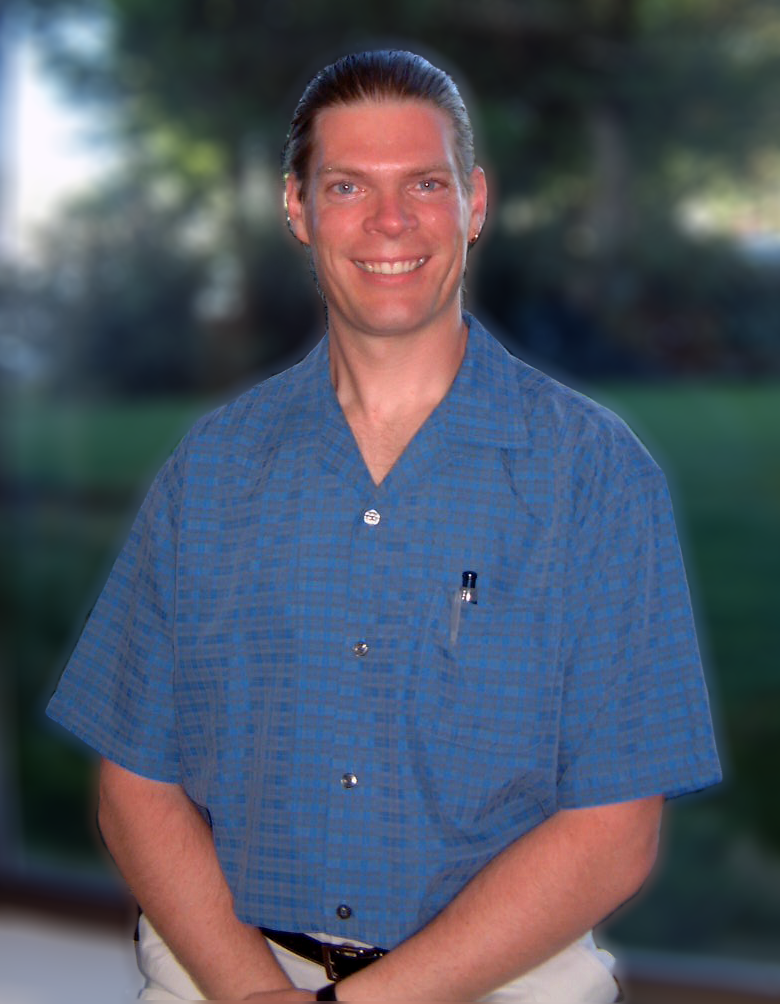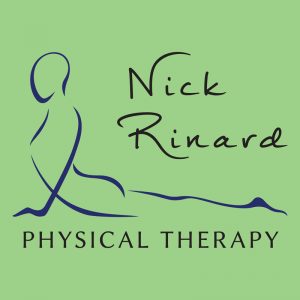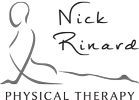What do a toy poodle and the human head have in common? They both share an average weight of 10-12 pounds. Your spine has three natural shock-absorbing curves which attenuate the stress of bearing that load above your shoulders while you move through your day. With good posture and frequent position changes, most of us can bear that weight without difficulty.
However, the moment you drop your chin to read the latest blog update on your cell phone the balance changes completely. When your head inclines forward 60 degrees the force your neck is bearing is equivalent to exchanging that toy poodle for a Labrador retriever – 60 pounds of force (Hansraj, 2014)! Consider that the average person sustains this position for 2-4 hours a day while using their smart phone and the load quickly becomes overwhelming. This chronic fatigue to the muscles and structure of the neck can lead to debilitating injury.
Your neck will thank you for contacting Nick Rinard Physical Therapy to address your posture.
Let us help you get that heavy Labrador off your shoulders!
Hansraj, KK. “Assessment of stresses in the cervical spine caused by posture and position of the head.” Surgical Technology International. 2014, November; 25:277-9
More
At Nick Rinard Physical Therapy a lot of patients come to see us with knee pain and/or knee arthritis, both before and after various knee surgeries, including total knee replacement surgeries.
Since 2010, knee replacements have been the most performed surgery on people over 45 years of age. Knee replacements are performed at the rate of 700,000 per year. Because of this increasing rate, the efficacy of pain relief and improvement of function should be investigated.
100 patients with knee arthritis
A researcher, Soren Thorgaard Skou, has done just that. In his study, he looked at 100 patients with knee arthritis and assigned them to a surgical group or non-surgical group (which received physical therapy, medication and diet education). After one year, 85% percent of the surgical group had significant improvements in pain vs 68% of the physical therapy group. The surgical group and larger gains in their ability to climb stairs and walk. However, the study also showed that the surgical group is at greater risk for complications that the physical therapy group is not. The surgical group is more likely to have blood clots or a manipulation (another procedure performed by the surgeon to increase range of motion). The surgical group had more adverse side effects vs the physical therapy group (24 vs. 6).
Physical therapy is effective
Physical therapy is effective and should be considered a viable option before jumping to surgery. If the first knee replacement can be delayed, this can decrease the necessity for a second surgery (current replacements last 10-15 years). We urge our patients to remember that we are always here for you before or after surgery. Nick Rinard Physical Therapy is a phone call away 503-244-6232 !
1/3rd of knee replacements are unnecessary
This, taken into consideration with the study that came out last summer that found nearly 1/3rd of knee replacements are unnecessary, should be considered when deciding to have a knee replacement or a trial of physical therapy to determine effectiveness.
Sources:
http://health.usnews.com/health-news/articles/2015/10/21/knee-replacement-brings-less-pain-better-function
Dr. Skou’s report (N Engl J Med. 2015 373;17:1668-9)
More
Many times we have patients who come for physical therapy treatment describing pain in their leg, but it turns out to be coming from their spine. This is often confusing for people, especially if they have been given a provisional medical diagnosis related to the area of pain, like “piriformis syndrome”, which is pain in one of your gluteal muscles. You may wonder how we determine where the pain is coming from and what to treat. Pain is produced by sensory nerves. Sensory nerves can be triggered locally at the spinally level, or peripherally either by muscle tension or injury. During the evaluation we always perform spine ROM to determine if the source could be coming from the spine. The screen must begin from the center outward. In some cases, knee/hip/ankle pain will decrease or increase during the lumbar spine screen, and then we know it is coming from the spine. This can be hard to understand for some patients because the pain they are experiencing feels like it is coming from that very spot, whether it is a joint or muscle, that is painful. For example, I recently evaluated a patient with ankle pain. She had even fallen, which made it possible she could have some trauma to her ankle from the fall. However, during the lumbar spine screen, her ankle pain decreased while performing a back bend. She was in disbelief that her ankle pain went away. After only a few visits her ankle pain was gone and it did not return. One of her lumbar discs was pressing on a nerve root and causing her ankle pain, and the back bending pushed the disc away from the nerve and abolished the pain. The moral of the story is, we can never assume a diagnosis until a thorough examination is performed.
More
By Nick Rinard MPT, Cert MDT
20 Apr, 2017
Physical Therapy Tips
bone, Cert. MDT, false positive, findings, imaging, joint, MRI, Nick Rinard MSPT, roles, x-ray
 “Should I get an x-ray or MRI before physical therapy?” This is a common question, and the answer is – NO. Why not? I hope to clarify that in this article, and give you a convincing reason to try physical therapy first.
“Should I get an x-ray or MRI before physical therapy?” This is a common question, and the answer is – NO. Why not? I hope to clarify that in this article, and give you a convincing reason to try physical therapy first.
First, physical therapists can make an accurate clinical diagnosis that will most likely match the radiological diagnosis. A 2005 study published in the Journal of Orthopedic and Sports Physical Therapy compared the agreement between what the physical therapist thought the imaging would show, and what doctors thought the imaging would show. “Clinical Diagnostic Accuracy and Magnetic Resonance Imaging of Patients Referred by Physical Therapists, Orthopedic Surgeons, and Non-orthopedic providers.” Physical therapists could predict the correct imaging diagnosis 74.5% of the time! That’s almost as accurate as orthopedic surgeons, and over twice as good as general practitioners!
- Physical Therapists = 74.5% (108/145)
- Orthopedic Surgeons = 80.8% (139/172)
- Non-orthopedic = 35.4% (86/243)
So, only in a small number of cases, will you need an x-ray or MRI to help determine your condition if it cannot be determined clinically.
False positives
Second, there are a lot of “false positive” findings associated with imaging. A false positive is when the test (radiologic image) shows you have the disease or condition, when you actually don’t. Some of you readers may know of people who were freaked out by a “finding” on their mammogram that turned out (luckily) to not be cancer. How often does this happen in the joints or spine that a physical therapist treats? If you are talking about the neck, quite a lot of people with NO NECK PAIN have a “major finding” on MRI. It is broken down below. (From The Journal of Bone and Joint Surgery 1990 “Abnormal magnetic-resonance scans of the cervical spine in asymptomatic subjects. A prospective investigation”)
For people less than 40 years old:
- Major abnormality in 14%
- Herniated disc = 10% (of subjects)
- Foraminal stenosis = 4%
- No “major” bulging discs were seen
- Narrowed disc space / degenerated discs = 25%
- Cord abnormalities = 9%
For people older than 40 years:
- Major abnormality in 28%
- Herniated disc = 5%
- Foraminal stenosis = 20%
- Only 1 subject “major” bulging disc was seen
- Narrowed disc space / degenerated discs = 57%
- Cord abnormalities = 1%
Remember, these are findings in people with NO NECK PAIN. If you have neck pain, there is a good chance that you might have one of these findings, but it would not be the source of your pain. The study authors conclude: “The prevalence of cervical spine pathology in asymptomatic (pain free) individuals of a wide-range of ages, points out the danger in ordering surgery or invasive procedures, or even giving the patient an ominous-sounding diagnosis, without first correlating these MRI findings with clinical signs and symptoms.”
Imaging the lumbar spine can also lead to errors as there is even greater incidence of false positive MRI findings in asymptomatic subjects in the lower back as compared to the neck…
“Abnormal magnetic-resonance scans of the lumbar spine in asymptomatic subjects. A prospective investigation.” J Bone Joint Surg Am. 1990
- 33% had a “substantial” abnormality
60 years old:
- 36% had a disc herniation
- 21% had spinal stenosis
Accurate Diagnosis with your Physical Therapist
If you are still reading this article, then you must be interested in getting an accurate diagnosis of your problem, and you might think a physical therapist could be the one person who can do that. You would be right. Plus, a physical therapist will offer you treatment for your condition, not surgery or drugs. I have been convinced beyond a doubt in my 20 plus years of practice that one should start with a good physical therapy evaluation and possibly treatment before turning to x-ray or MRI. A good physical therapist knows when the clinical diagnosis is complete and correct and when imaging is needed to help fill in the blanks. Don’t get an x-ray or MRI first. It might point you in the wrong direction and bias the clinician trying to arrive at the correct diagnosis and treatment. If you truly need imaging, your physical therapist at Nick Rinard Physical Therapy can help guide you in that decision.
More
 The American Heart Association recommends at least 30 minutes of moderate-intensity aerobic activity at least 5 days/week. In the pursuit of good health and fitness, many people are using YouTube to access new workouts. Unfortunately, there is neither quality control nor an accreditation process to ensure that the workouts are sound. Further complicating things is the “no pain, no gain” exercise myth which leads people to expect suffering with exercise. If someone expects exercising to be painful, they may not heed the early warning signs of pain and become injured.
The American Heart Association recommends at least 30 minutes of moderate-intensity aerobic activity at least 5 days/week. In the pursuit of good health and fitness, many people are using YouTube to access new workouts. Unfortunately, there is neither quality control nor an accreditation process to ensure that the workouts are sound. Further complicating things is the “no pain, no gain” exercise myth which leads people to expect suffering with exercise. If someone expects exercising to be painful, they may not heed the early warning signs of pain and become injured.
Recently, I treated a young woman who developed severe lower back pain after exercising with a popular fitness program online. She continued to push herself through the routines but after 2 weeks she quit exercising entirely. She was frustrated because her efforts to improve her health had actually worsened her condition. Her back pain was interrupting her sleep and limiting her ability to concentrate at work.
After just 4 sessions at Nick Rinard Physical Therapy she was pain free and equipped with an effective, individualized exercise program that supported her fitness goals without compromising her If your workout is wearing you down, we can help you get on the right track! Don’t settle for suffering through your exercise routine when you could be thriving.
More
By Margo Burette, DPT
08 Aug, 2016
Posture
assessment, cervical spine, chin, common, contact, posture, power, stresses, Toy poodle

What do a toy poodle and the human head have in common? They both share an average weight of 10-12 pounds. Your spine has three natural shock-absorbing curves which attenuate the stress of bearing that load above your shoulders while you move through your day. With good posture and frequent position changes, most of us can bear that weight without difficulty.
However, the moment you drop your chin to read the latest blog update on your cell phone the balance changes completely. When your head inclines forward 60 degrees the force your neck is bearing is equivalent to exchanging that toy poodle for a Labrador retriever – 60 pounds of force (Hansraj, 2014)! Consider that the average person sustains this position for 2-4 hours a day while using their smart phone and the load quickly becomes overwhelming. This chronic fatigue to the muscles and structure of the neck can lead to debilitating injury.
Your neck will thank you for contacting Nick Rinard Physical Therapy to address your posture.
Let us help you get that heavy Labrador off your shoulders!
Hansraj, KK. “Assessment of stresses in the cervical spine caused by posture and position of the head.” Surgical Technology International. 2014, November; 25:277-9
More
This is a placeholder for the Newsletter plugin images. You may edit and reuse this post but do not remove it.
More
As a PT student exposed to the McKenzie Method for the first time, I observed therapeutic results that appeared miraculous in their efficiency and expediency. It was eye-opening to learn the principles of MDT and the systematic logical approach to classifying and treating notoriously difficult-to-treat conditions including chronic debilitating back pain. Many patients I observed confessed they had battled back pain for decades and tried everything, including pharmacology, chiropractic, acupuncture, massage, as well as craniosacral therapy.
When I was injured in a car accident, I received McKenzie treatment and felt better within the first 2 weeks. In this car accident, I had been rear-ended at high velocity on the freeway, and was recovering from a fracture. My treatment included rest (lying down for 10 minutes) to reduce inflammation and gentle range of motion exercises. This was doable despite a busy schedule and I was able to resume my regular workload sooner than anticipated.
Previously, I had been rear-ended twice at lower velocities, and pursued chiropractic and massage treatment both times. Chiropractic involved 3 visits per week initially, and went on for a year. This took a lot of precious time out of my schedule and came at a high financial expense. At the time, I noticed I felt better whenever I stayed active, but the sharp pain in my neck and back returned several times per week. I felt unable to manage my pain and thought I needed the chiropractor to “fix me.”
 At Nick Rinard Physical Therapy I achieved a pain free full return to function in less than 2 months. Over the last 4 weeks, I only required 2-3 visits and was able to manage exacerbations of pain mostly on my own since I knew what exercises would provide relief. In addition to effective treatment, I was happy with the way Nick and his team treat everyone. I always felt welcome and appreciated, like a member of the family.
At Nick Rinard Physical Therapy I achieved a pain free full return to function in less than 2 months. Over the last 4 weeks, I only required 2-3 visits and was able to manage exacerbations of pain mostly on my own since I knew what exercises would provide relief. In addition to effective treatment, I was happy with the way Nick and his team treat everyone. I always felt welcome and appreciated, like a member of the family.
As both a student and patient of MDT, I am thrilled at the results it provides.
Patient perspective:
McKenzie is initially less hands-on compared to other PT approaches. The patient is an active participant in healing, and engages in a personalized home program from day one. Education is an integral aspect of treatment. This empowers the patient to understand the cause of their ailment, and provides the patient with tools to remedy recurrences or exacerbations. McKenzie treatment is a great investment of a patient’s time and funds, as it provides a toolkit to effectively self-manage pain.
Physical Therapist (PT) perspective:
McKenzie therapy is a disciplined classification system with a logical testing protocol that guides treatment. The classifications and associated interventions and progressions can be applied to many health conditions. Having a clear protocol helps the therapist stay focused and effective when the clinical presentation appears unclear. MDT includes the patient as an educated, active partner and decreases patient dependency on passive treatment mechanisms. Patients tend to obtain good results quicker and need fewer visits compared to other therapeutic approaches. MDT is based on understanding the mechanical and physiologic events of spinal derangements, altered tissue, and inflammation. It is logical and effective.
How MDT is different:
McKenzie therapy provides a clear, well-organized protocol to assess, classify, and treat health conditions appropriate for physical therapy. Treatment consists of limited, low-dosed and highly targeted exercises designed to provide clarity of diagnosis. This serves as the dependent variable whose effect is measured and helps clarify the clinical picture. Patient’s response to treatment is generally assessed within 48 hours, and fine-tuned/altered/progressed according to findings. Due to this disciplined and focused approach, MDT frequently resolves common conditions including back pain and neck pain in less visits, and therefore at substantial financial and time savings.
More
By Megan Plante, DPT
07 Apr, 2016
Physical Therapy Tips
age, aging, balance, challenge, dynamic, exercises, general, knowledge, Physical Therapy, practice, static
It is general knowledge that, as we age, our sensory systems start to decline. This includes sight, smell, temperature regulation and balance mechanisms. It’s important to have good balance because if it declines, you are at a higher risk for falling. And falling, results in injuries that can greatly affect your life.
Exercises that Challenge your Balance
What many people don’t know, is that you can work on making your balance stronger, just like you do a muscle: by exercising it! What physical therapy aims to do, is find exercises that challenge your balance system, so that your body must learn to adapt to certain situations and re-train itself on what to do.
Static and Dynamic Exercises
Physical Therapists can provide both static and dynamic exercises for you, depending on what is most challenging. Exercises can be very simple and integrated during daily routines- like balancing on one leg while brushing your teeth.
If you are having trouble with your balance, come in to Nick Rinard Physical Therapy and have an assessment by a physical therapist! 503-244-6232
More
Physical Therapy clinicians are not only therapists, they are educators. A big part of being a physical therapist is answering patient’s questions and educating them on anatomy, the proper way to perform an exercise, how to walk and transfer safely, and what to expect going into surgery.
One-on-one educational session with a physical therapist
A recent study looked at the benefit of having a one-on-one educational session with a physical therapist prior to having a total joint replacement surgery. A researcher split 126 patients into two groups: one group had a group class prior to having surgery, the second group had an additional one-on-one session with a physical therapist. “Significantly more patients who attended the extra one-on-one counseling session with the physical therapist before surgery indicated that they were better prepared to leave the hospital after surgery and were, overall, more satisfied with the preoperative education they received,” Dr. Joshi stated.
Additionally, the patients who received the one-on-one session had required fewer PT sessions in the hospital and met discharge criteria (walking up/down stairs and transferring out of bed) faster.
What this indicates is that patients benefit from a one-on-one educational session with a physical therapist prior to joint replacement.
Improve overall satisfaction
Patients, therefore, may consider having a pre-surgical appointment with a physical therapist to improve their overall satisfaction and outcomes following a total joint replacement
Source: http://www.news-medical.net/news/20160222/Patients-benefit-from-one-on-one-counseling-session-prior-to-knee-or-hip-replacement-surgery.aspx
More

 “Should I get an x-ray or MRI before physical therapy?” This is a common question, and the answer is – NO. Why not? I hope to clarify that in this article, and give you a convincing reason to try physical therapy first.
“Should I get an x-ray or MRI before physical therapy?” This is a common question, and the answer is – NO. Why not? I hope to clarify that in this article, and give you a convincing reason to try physical therapy first. The American Heart Association recommends at least 30 minutes of moderate-intensity aerobic activity at least 5 days/week. In the pursuit of good health and fitness, many people are using YouTube to access new workouts. Unfortunately, there is neither quality control nor an accreditation process to ensure that the workouts are sound. Further complicating things is the “no pain, no gain” exercise myth which leads people to expect suffering with exercise. If someone expects exercising to be painful, they may not heed the early warning signs of pain and become injured.
The American Heart Association recommends at least 30 minutes of moderate-intensity aerobic activity at least 5 days/week. In the pursuit of good health and fitness, many people are using YouTube to access new workouts. Unfortunately, there is neither quality control nor an accreditation process to ensure that the workouts are sound. Further complicating things is the “no pain, no gain” exercise myth which leads people to expect suffering with exercise. If someone expects exercising to be painful, they may not heed the early warning signs of pain and become injured.
 At Nick Rinard Physical Therapy I achieved a pain free full return to function in less than 2 months. Over the last 4 weeks, I only required 2-3 visits and was able to manage exacerbations of pain mostly on my own since I knew what exercises would provide relief. In addition to effective treatment, I was happy with the way Nick and his team treat everyone. I always felt welcome and appreciated, like a member of the family.
At Nick Rinard Physical Therapy I achieved a pain free full return to function in less than 2 months. Over the last 4 weeks, I only required 2-3 visits and was able to manage exacerbations of pain mostly on my own since I knew what exercises would provide relief. In addition to effective treatment, I was happy with the way Nick and his team treat everyone. I always felt welcome and appreciated, like a member of the family.